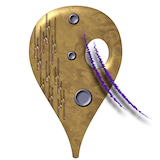All of Infocom's game source code
Tuesday, April 16, 2019
Comments: 20 (latest May 11)
Tagged: zork, infocom, interactive fiction, zil, if
Jason Scott just posted all of the source code for Infocom's text games.
I can just leave that statement there, right? I don't have to elaborate? Jason describes it better than I could, anyhow:
So, Infocom source code is now uploaded to Github. Most people don't speak or want to speak the language it's written in, ZIL (Zork Implementation Language). You can browse through it and kind of suss out what's being done when and the choices made over the course of time.
In cases where the source code had multiple revisions, and I don't know the story of what revisions came when and came why, I did a reasonable job of layering them out (this came before that, that came after that) and doing multiple "check-ins" of the code so you can see diffs.
Often, there are cases that some games were built up from a previous game, allowing modification of the macros and structures and then making them work in the new game. For example, an NPC partygoer in one game was a thief in a previous one. Dungeons become stores, etc.
--@textfiles (Jason Scott), from a twitter thread
This material has been kicking around for a while now. If you search for articles about "the Infocom drive", you'll see some discussion from years past. Actually, don't do that, it's mostly old arguments that don't need to be rehashed.
The point is that a great deal of historical information about Infocom has been preserved -- but it's not publicly archived. You can't go research it anywhere. Nobody admits to having it, because it's "proprietary IP", and you're not supposed to trade in that stuff because companies like Activision make the rules.
So when Jason puts this information online, he's taking a stance. The stance is: history matters. Copyright is a balance between the rights of the owner to profit and the rights of the public to investigate, discuss, and increase the sphere of culture. Sometimes the balance needs a kick.
Quite possibly all these repositories will be served with takedown requests tomorrow. I'm downloading local copies for myself tonight, just in case.
One other note: Jason's comments say "...there is currently no known way to compile the source code in this repository into a final "Z-machine Interpreter Program" (ZIP) file." This is somewhat out of date. There are long-standing open-source efforts to build a ZIL compiler. ZILF is the most advanced one that I know of. I don't know whether it's rated to compile this historical ZIL code -- but I'm sure that people are already giving it a shot.

